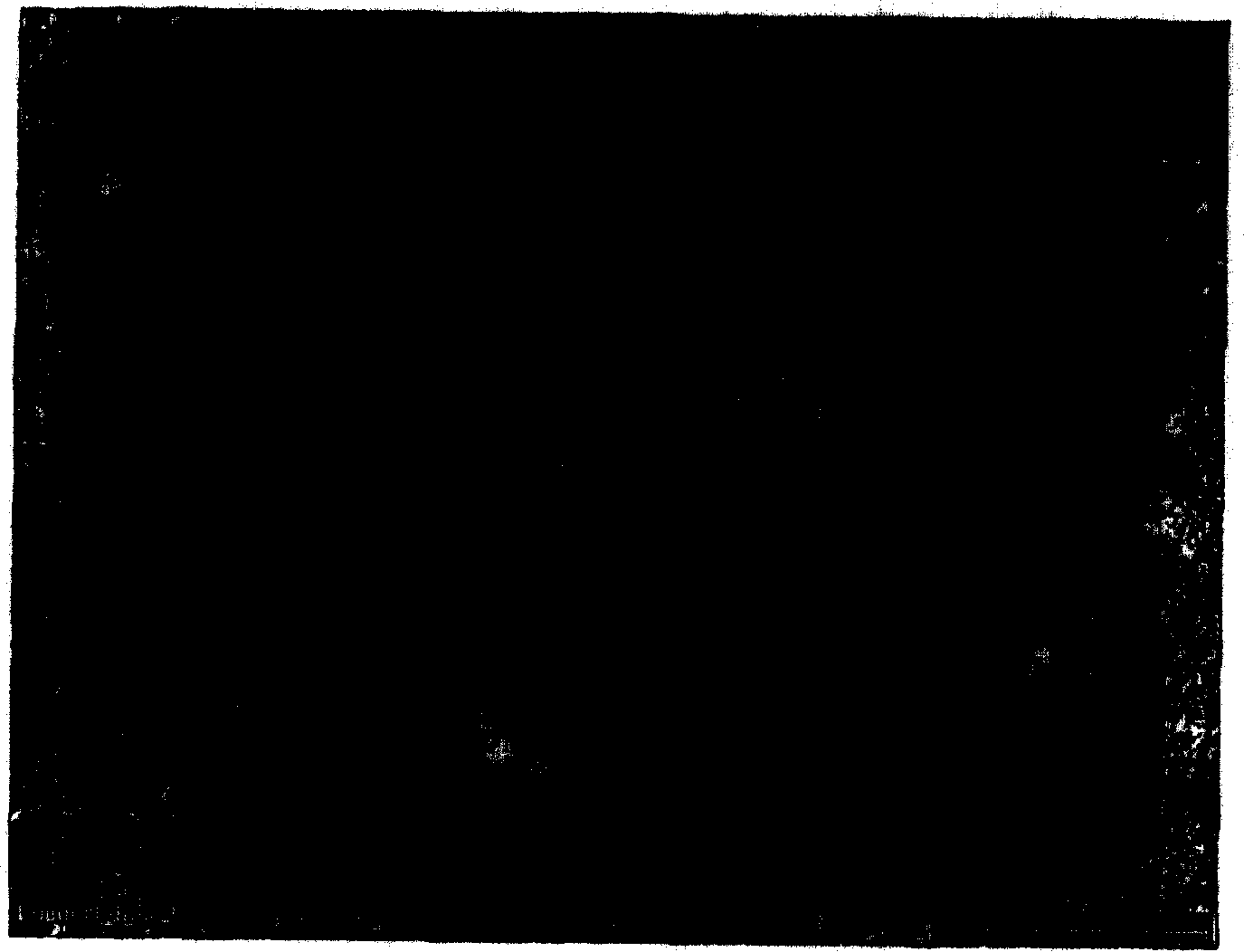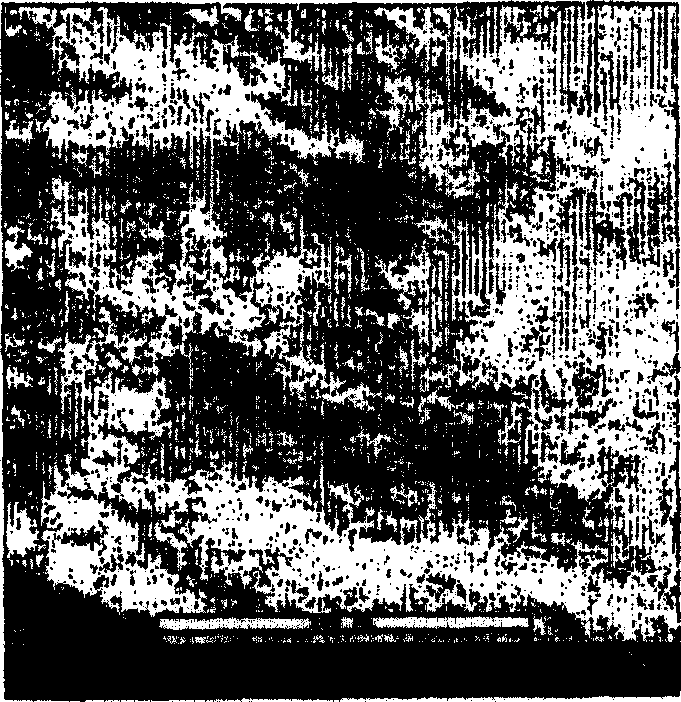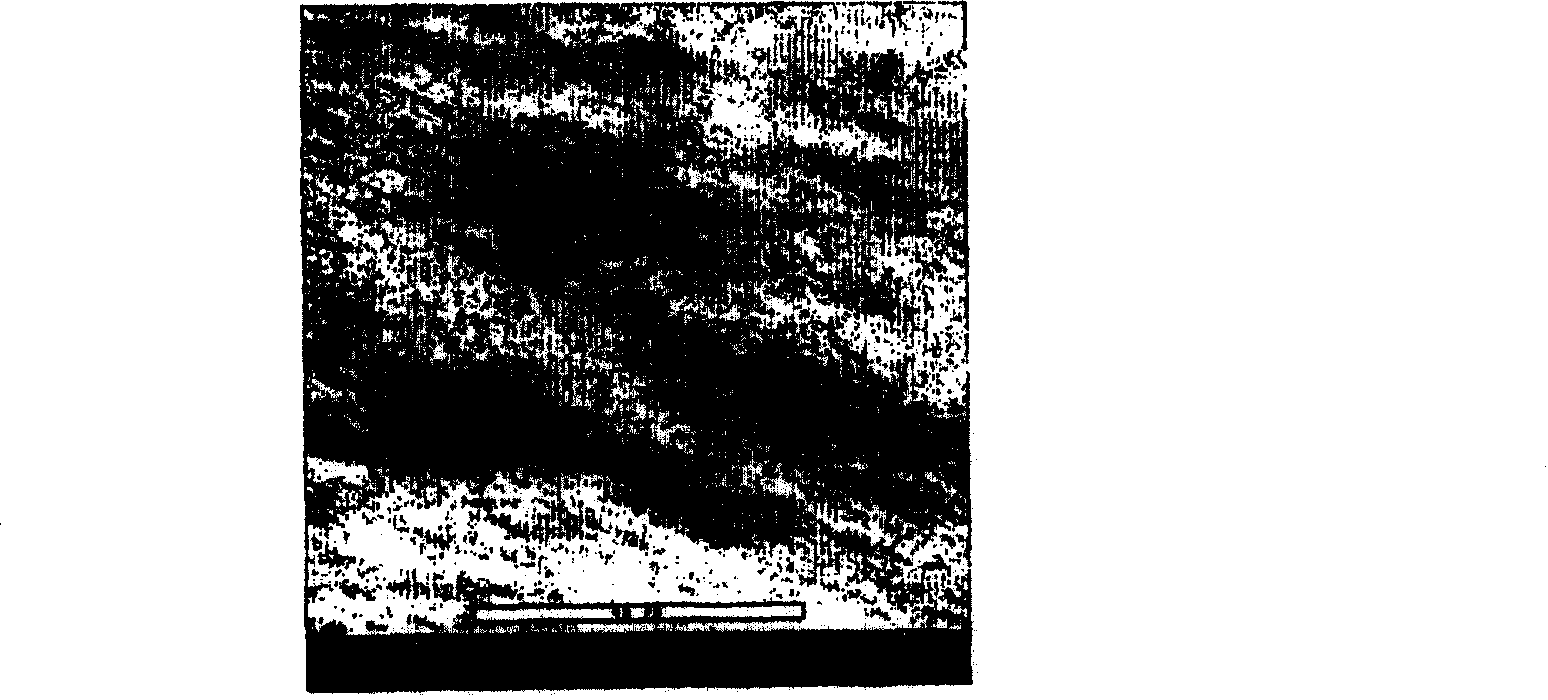Methods for repairing and regenerating human dura mater
A dura mater and biological matrix technology, applied in medical science, prosthesis, etc., can solve the problems of not being able to provide reabsorbable replacement dura mater, spreading microorganisms, viruses and prions, etc.
- Summary
- Abstract
- Description
- Claims
- Application Information
AI Technical Summary
Problems solved by technology
Method used
Image
Examples
Embodiment 1
[0125] This example provides the results of an experiment conducted with sheep to evaluate the suitability of equine collagen flakes as a dura mater substitute for repairing dura mater tissue and as a biological matrix for dura mater regeneration.
[0126] Experiments were performed in order to evaluate the properties of equine collagen flakes as a skull dura mater substitute, as studied in a sheep model. The equine collagen flakes consisted of native equine collagen fibrils (5.6 mg / cm 2 ) and does not include cellular components.
[0127] The reference product used was preserved human cadaver dura mater ( Dura). Both products were attached in place using only fibrin glue (Tissucol Duo S Immuno, Baxter AG, Vienna, Austria).
[0128] The following items were studied:
[0129] Visual inspection of the integration of the two grafts;
[0130] Reactions of adjacent tissue structures (inflammation, adhesions, fibrosis, necrosis); and
[0131] Histological assessment of inte...
Embodiment 2
[0257] Example 2 - Swellability of Equine Collagen Flakes
[0258] Studies concerning the swelling capacity of the equine collagen flakes were carried out as follows:
[0259] 1) First, the horse collagen sheet is cut into 1cm 2 square slices.
[0260] 2) Examine samples of these cut pieces under a conventional scanning microscope in order to determine the general morphological consistency and thickness of the material as a reference for the expansion process.
[0261] 3) These cut pieces were then put into plastic Petri dishes.
[0262] 4) Fluid uptake capacity and swelling capacity are then checked by serial titration with physiological saline solution, administered with an Eppendorf micropipette, using gradually increasing amounts of fluid from 10 μl / cm 2 Start up to a maximum of 150 μl / cm 2 (See Table 3).
[0263]
[0264] result:
[0265] The amount of fluid penetrated into the equine collagen sheets was measured after 1, 2 and 3 hours as indicated in the table a...
Embodiment 3
[0270] Example 3 - Increase in length of hydrated equine collagen flakes
[0271] 1.0cm 2 Seven dried equine collagen flakes of the size were placed in isotonic sodium chloride and hydrated for 1 hour. The average increase in length due to hydration of dried equine collagen flakes was approximately 3.4%.
[0272] Table 4
[0273] film number dry length
PUM
| Property | Measurement | Unit |
|---|---|---|
| thickness | aaaaa | aaaaa |
| thickness | aaaaa | aaaaa |
| thickness | aaaaa | aaaaa |
Abstract
Description
Claims
Application Information
 Login to View More
Login to View More - R&D
- Intellectual Property
- Life Sciences
- Materials
- Tech Scout
- Unparalleled Data Quality
- Higher Quality Content
- 60% Fewer Hallucinations
Browse by: Latest US Patents, China's latest patents, Technical Efficacy Thesaurus, Application Domain, Technology Topic, Popular Technical Reports.
© 2025 PatSnap. All rights reserved.Legal|Privacy policy|Modern Slavery Act Transparency Statement|Sitemap|About US| Contact US: help@patsnap.com



